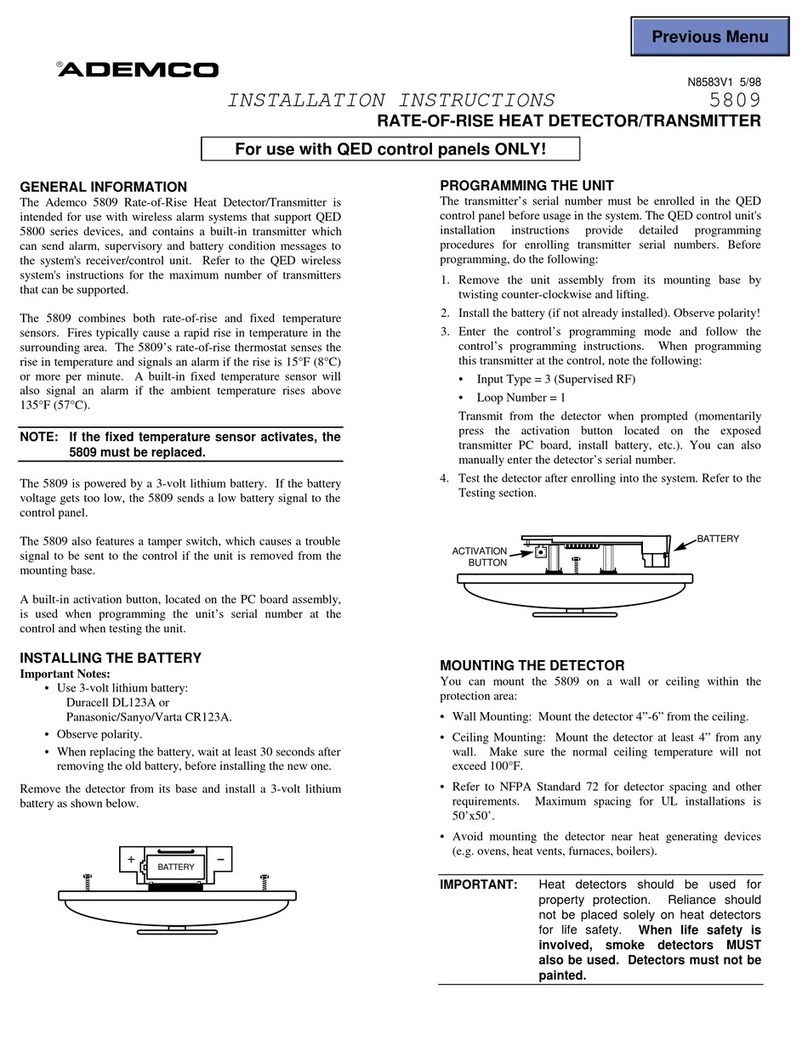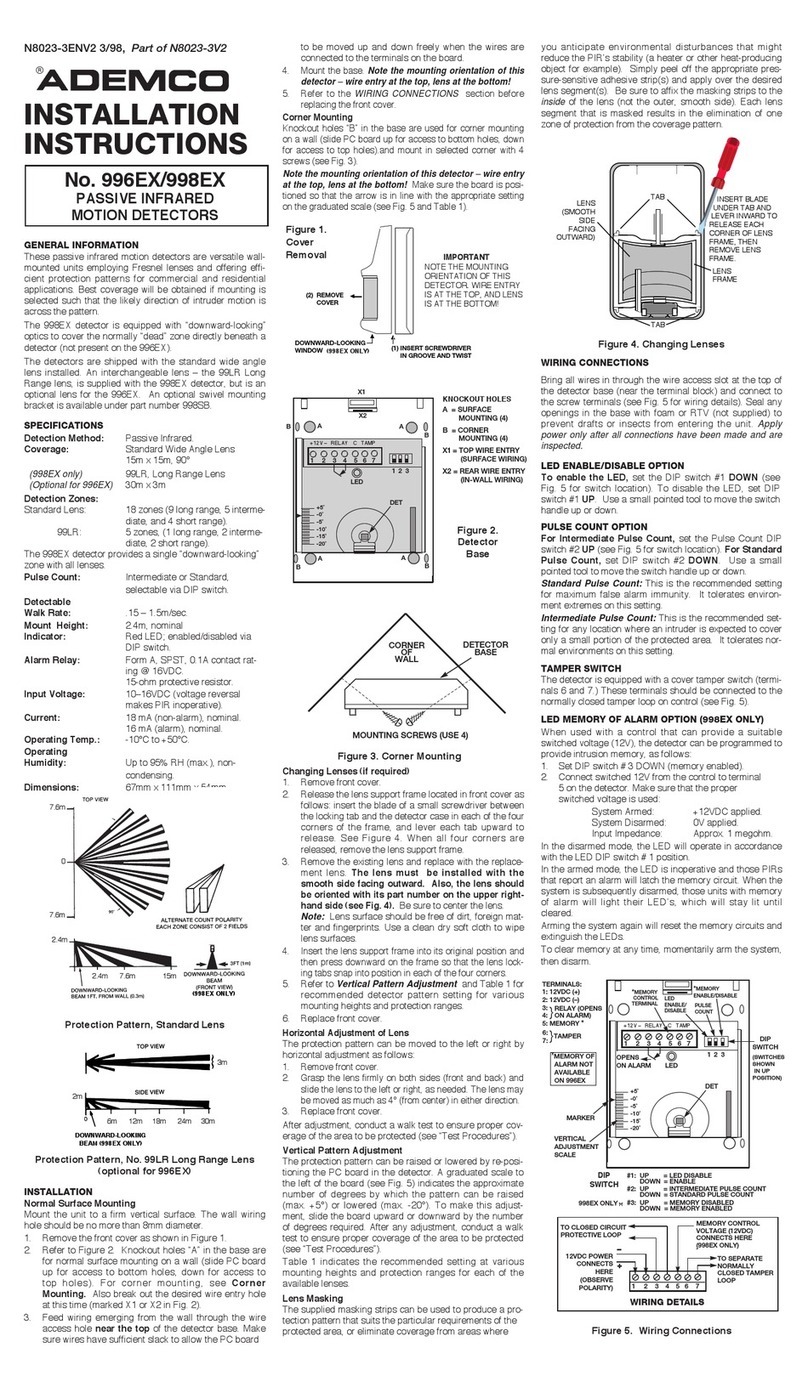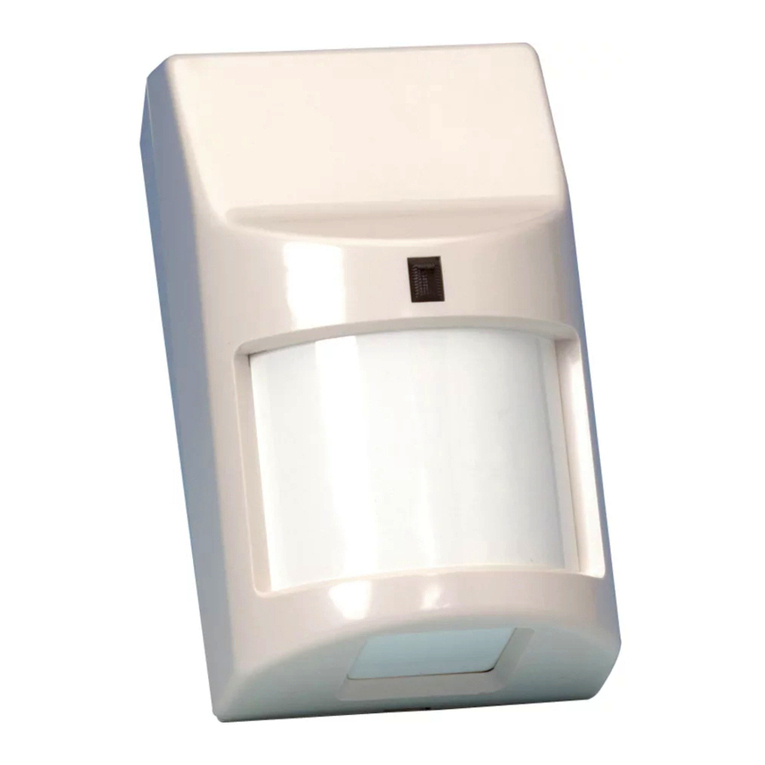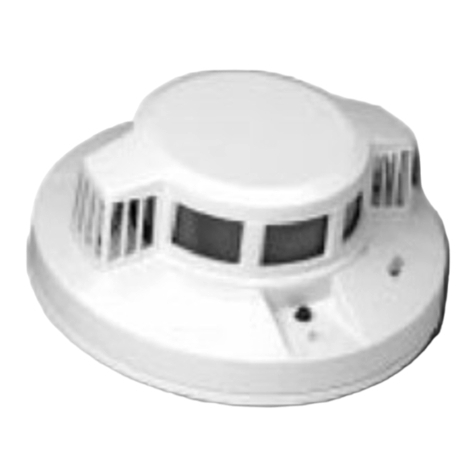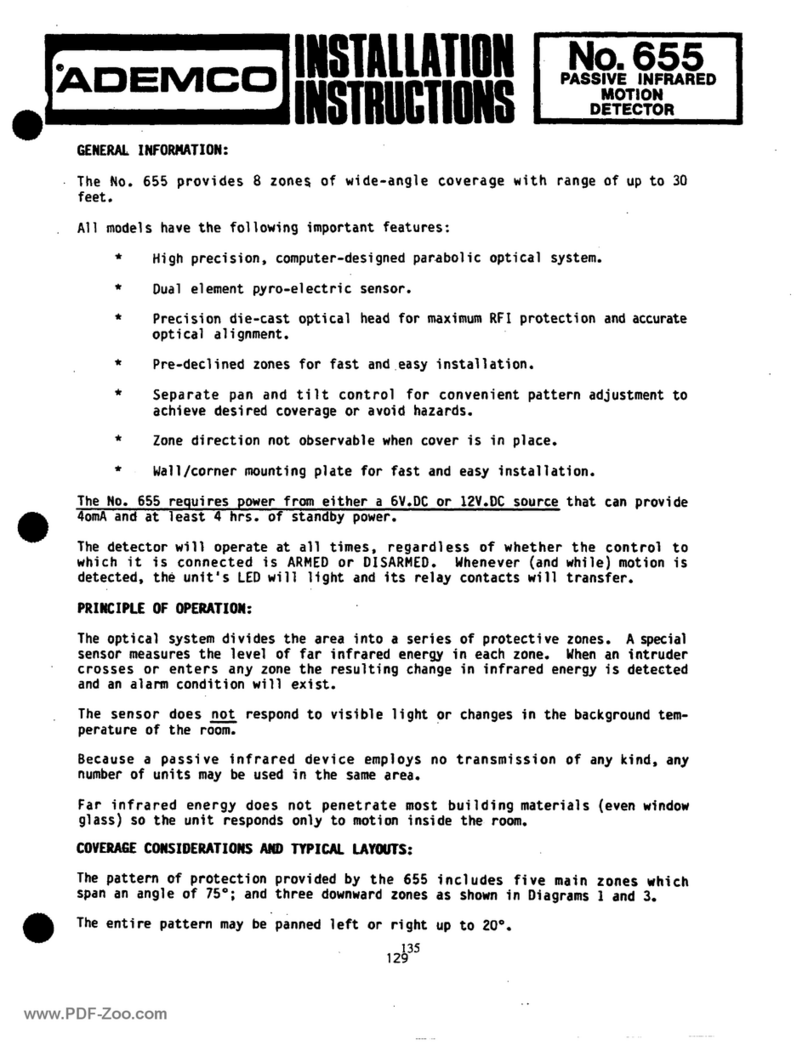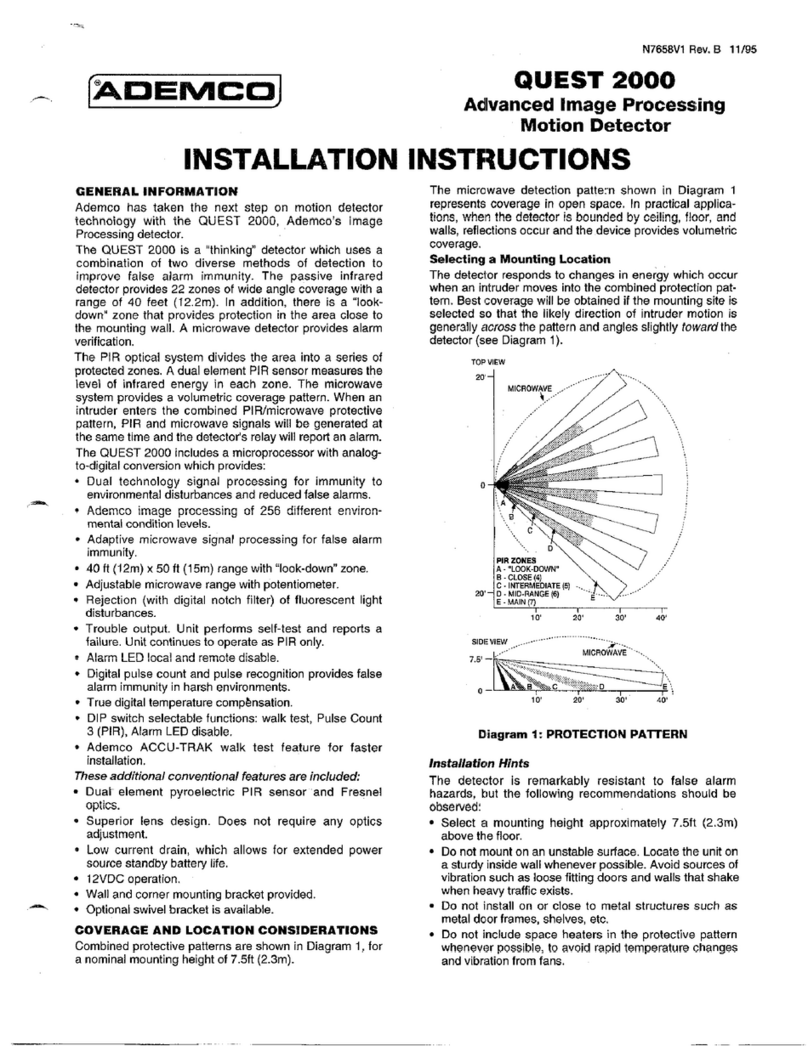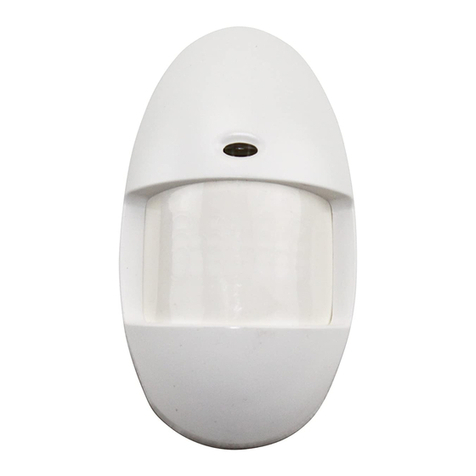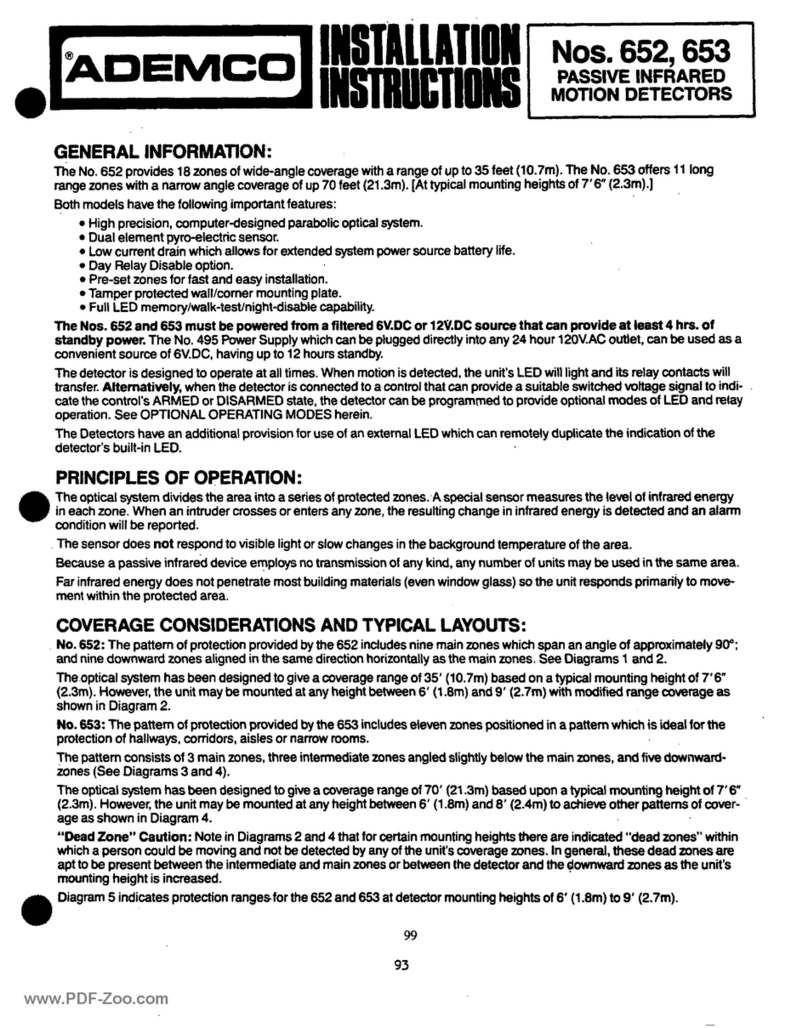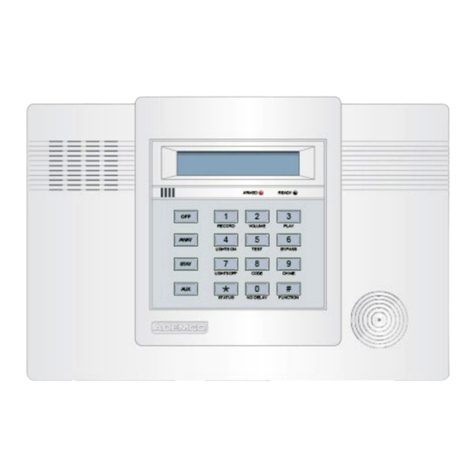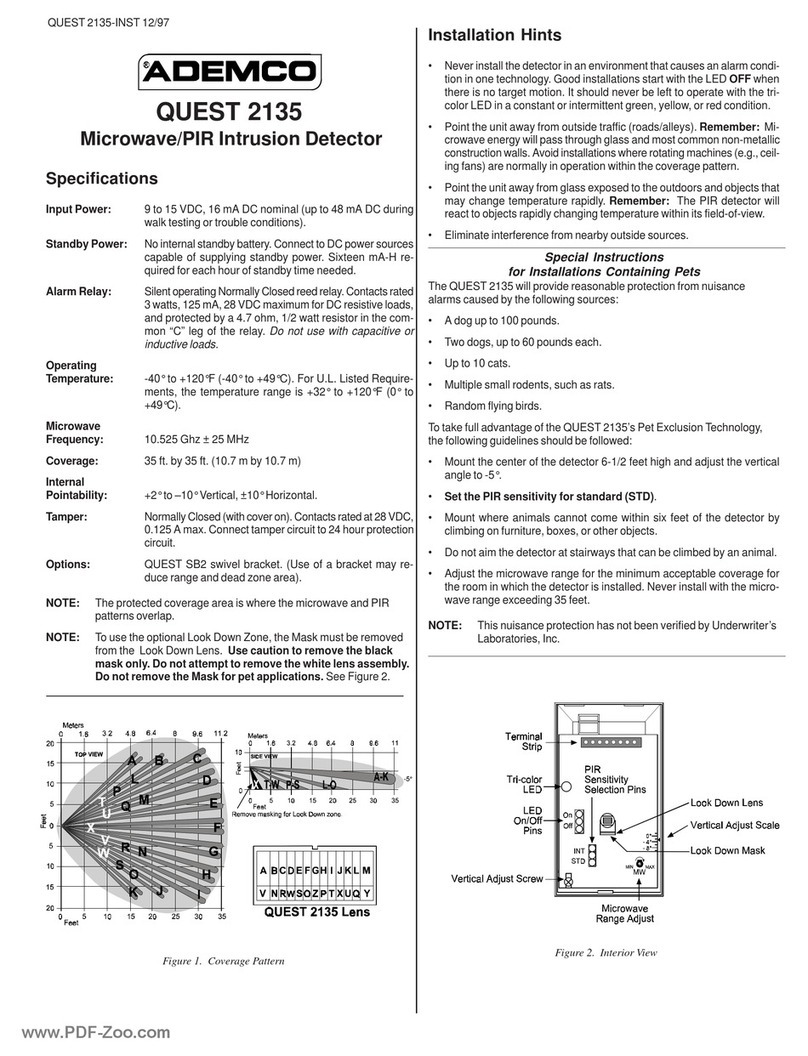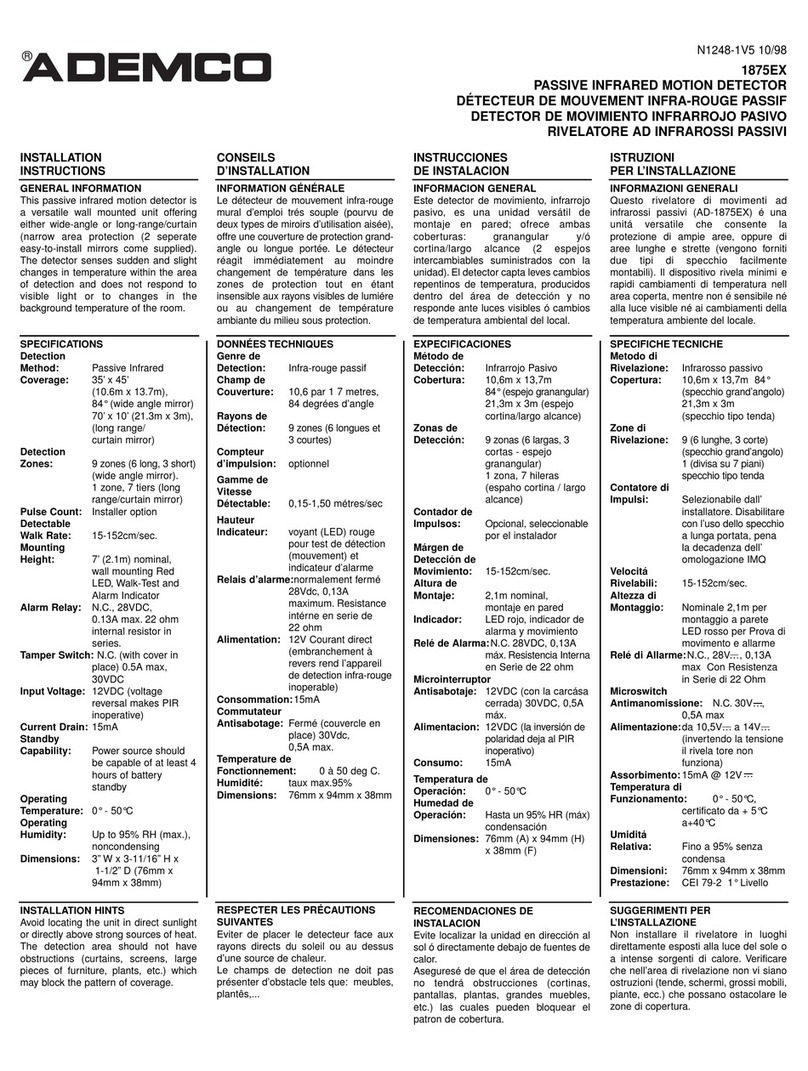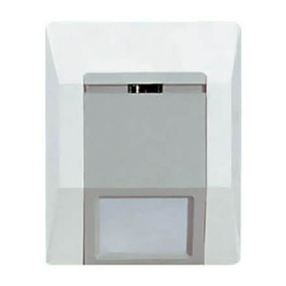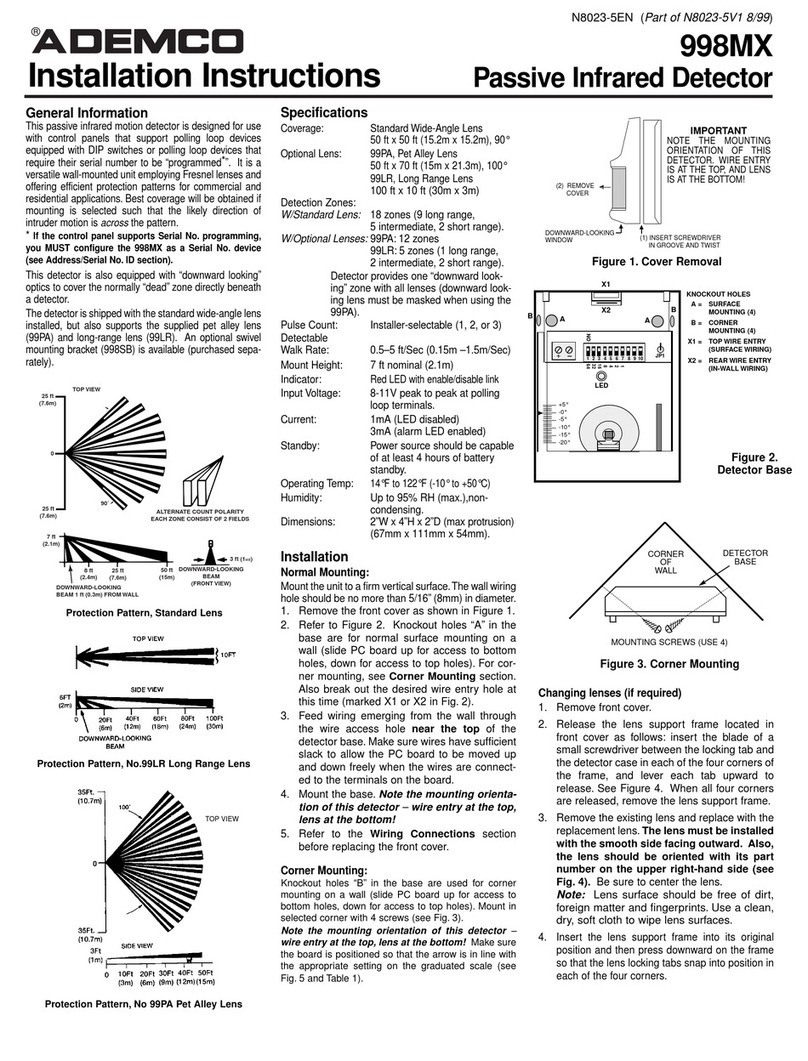
Smoke & Heat Detector Troubleshooting
https://alpha.adt.com/help/89[11/12/2018 9:58:31 PM]
temperature, as measured by its internal thermostat, rises more than 15 F in one minute, the alarm
is triggered. Some types of heat detectors may use a sealed chamber. As the temperature rises, the
air within the sealed chamber expands. Should the chamber air expand faster than it can escape
through the calibrated vent, the diaphragm is depressed, and the electrical contact closes the
circuit, triggering the alarm.
Fixed Heat: Activates once the temperature reaches the defined setting. This type will activate
once, and then need to be replaced. The fixed temperature element reacts to heat by responding to
a specific temperature setting (135º F or 194º F). The detection method is based on the spring
action of a metal contact held to the metal chamber by a fusible alloy. When the temperature
reaches the alloy’s melting point, the metal contact springs up, closing the circuit and triggering the
alarm.
Dual: Includes both Rate of Rise and Fixed Heat sensors
Heat detectors are installed normally in areas such as garages, basements, attics, kitchens, boiler rooms, bathrooms and smoking
areas. They are used for property protection and not life safety.
Caring for the Smoke Detector
Your smoke detector is sensitive to dust and particles in the air. Before performing any activity near the
smoke detector which may cause excessive dust or smoke, such as remodeling or soldering, place your
system on test to avoid a false alarm. Please refer to the System Test page. If remodeling or other activity
will create excessive dust for an extended period, please either remove the smoke detector or cover it
with a plastic cover before beginning construction. Do not paint the smoke detector; this will cause it to
be non-operational.
Dust and other particles will collect on the smoke detector over time during normal use.
The smoke detector should be cleaned periodically cleaned to remove these accumulated
particles. The following cleaning steps refer to the wireless Ademco Honeywell model
5806W3. Further information is available in the Ademco Honeywell 5803W3 device manual.
To clean the smoke detector:
1. Place your system in Test mode. Please refer to the System Test page.
2. Remove the detector housing from the base by twisting counter-clockwise.
3. Remove the battery from the unit.






